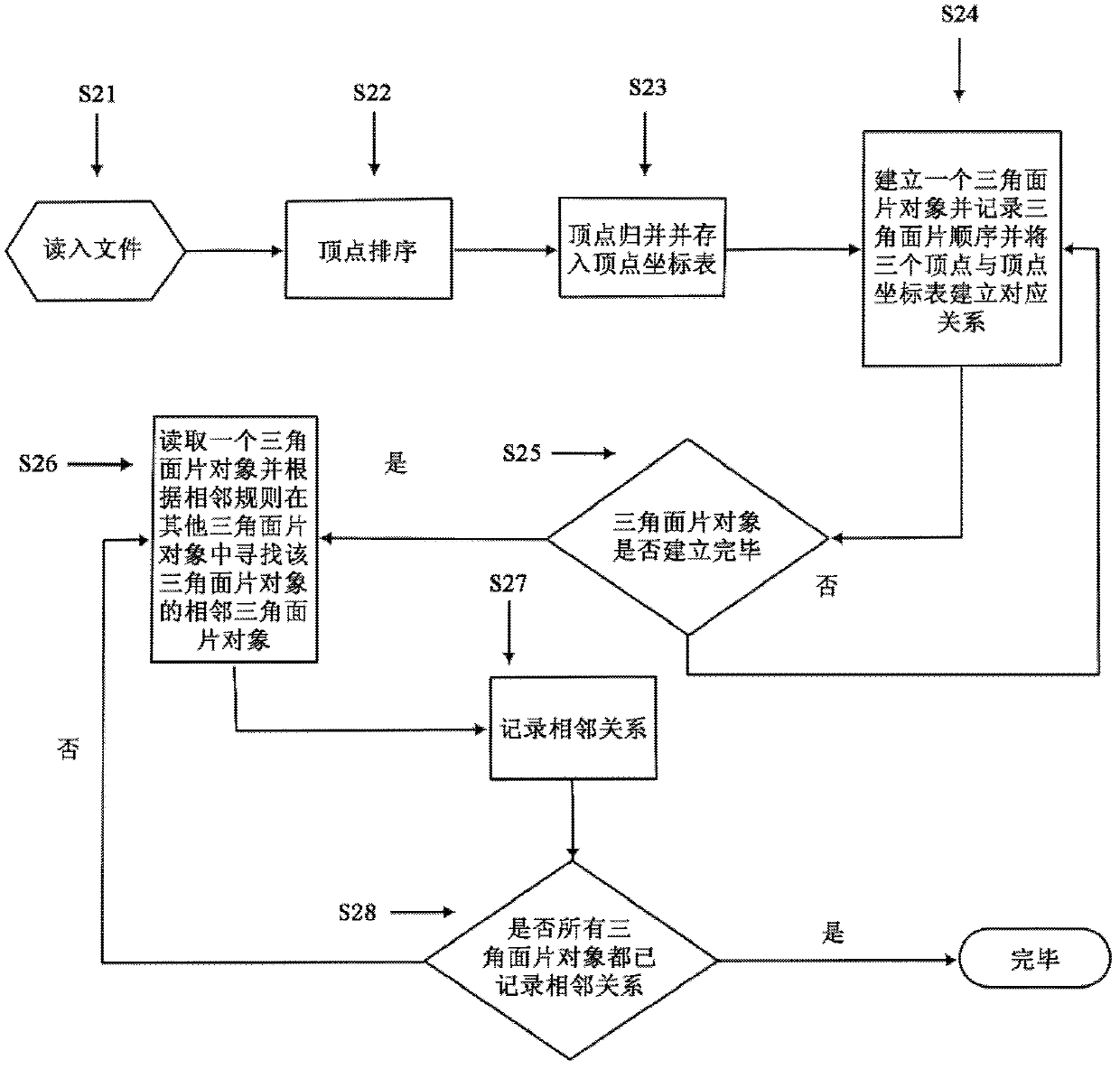Method for separating topological face based on triangular patch model
A triangular patch and separation method technology, applied in 3D modeling, image data processing, instruments, etc., can solve problems such as not including triangular topological adjacent information, a large number of triangular patches, and lack of topological information
- Summary
- Abstract
- Description
- Claims
- Application Information
AI Technical Summary
Problems solved by technology
Method used
Image
Examples
Embodiment Construction
[0043] The present invention will now be described in detail with reference to various exemplary embodiments of the invention. It should be noted that, while the invention will be described in conjunction with an exemplary embodiment, this description is not intended to limit the invention to the exemplary embodiment. On the contrary, the present invention will not only cover this exemplary embodiment, but also various alternatives, changes, equivalents and other embodiments, and the protection scope of the present invention should be determined by the claims.
[0044] Refer below figure 1 To describe the topological surface separation method based on the triangular patch model according to the present invention. In step S11, data preprocessing is first performed on the triangular patch. Those skilled in the art know that the triangle patch only contains the geometric position information of the model, and the vertices of the triangles are repeatedly recorded. For example, ...
PUM
 Login to View More
Login to View More Abstract
Description
Claims
Application Information
 Login to View More
Login to View More - R&D
- Intellectual Property
- Life Sciences
- Materials
- Tech Scout
- Unparalleled Data Quality
- Higher Quality Content
- 60% Fewer Hallucinations
Browse by: Latest US Patents, China's latest patents, Technical Efficacy Thesaurus, Application Domain, Technology Topic, Popular Technical Reports.
© 2025 PatSnap. All rights reserved.Legal|Privacy policy|Modern Slavery Act Transparency Statement|Sitemap|About US| Contact US: help@patsnap.com



